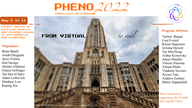Speaker
Description
The non-observation of the simplest dark matter candidates has motivated searches for a wider range of alternatives. One possibility is self-interactions within the dark sector causing dark matter to clump into heavy composite states. Their corresponding low number density poses a challenge for existing direct detection experiments due to the highly suppressed event rate. In this talk, I discuss the opportunity to use geologically old quartz samples as large-exposure detectors for such ultraheavy dark matter (UHDM). Since UHDM has a large cross section with the standard model, it would leave a long, straight damage track as it passes through and scatters with matter. This is a distinctive and compelling signature for our search. The advantage of our strategy is twofold: the age of the quartz compensates for the low UHDM number density, and the characteristic geometry of the damage track serves as a high-fidelity background rejection tool.

